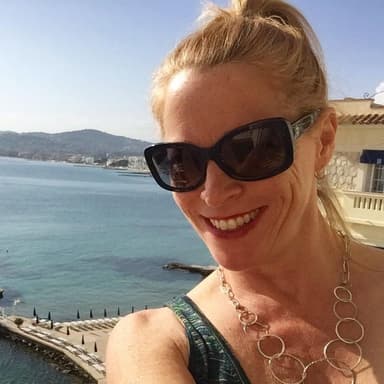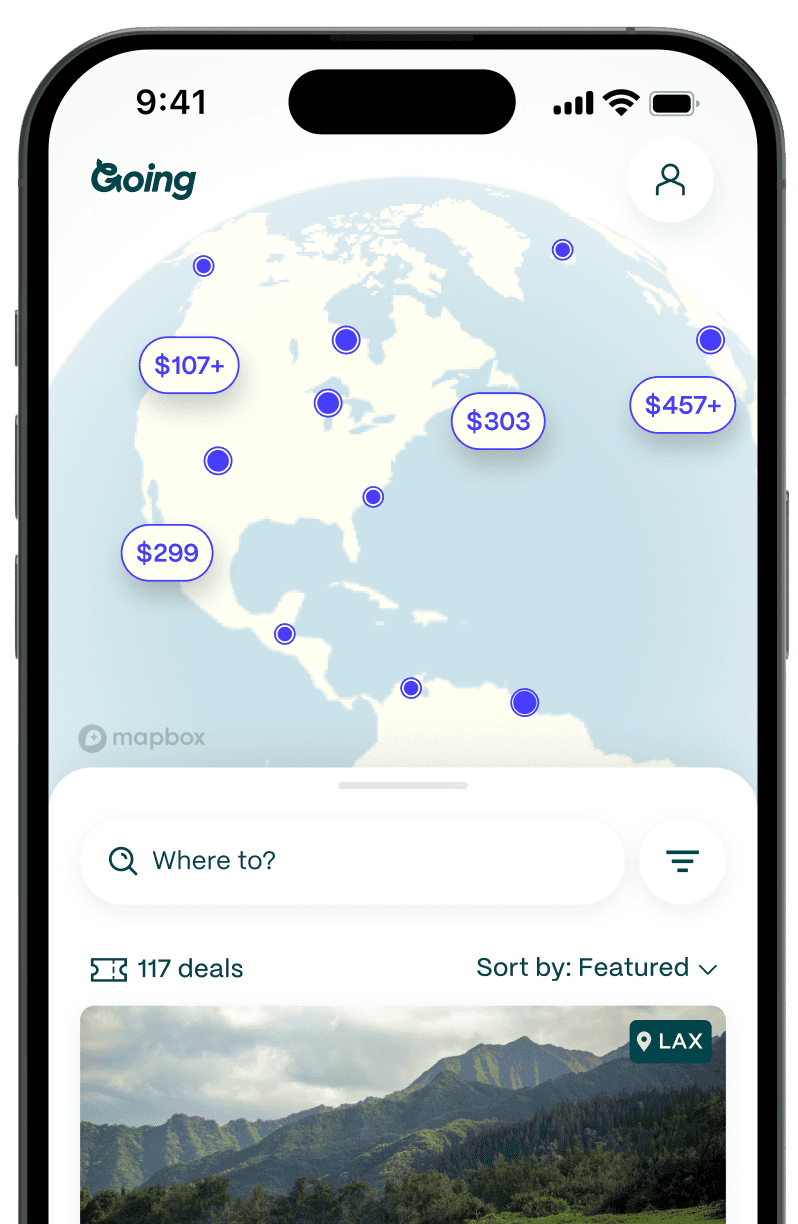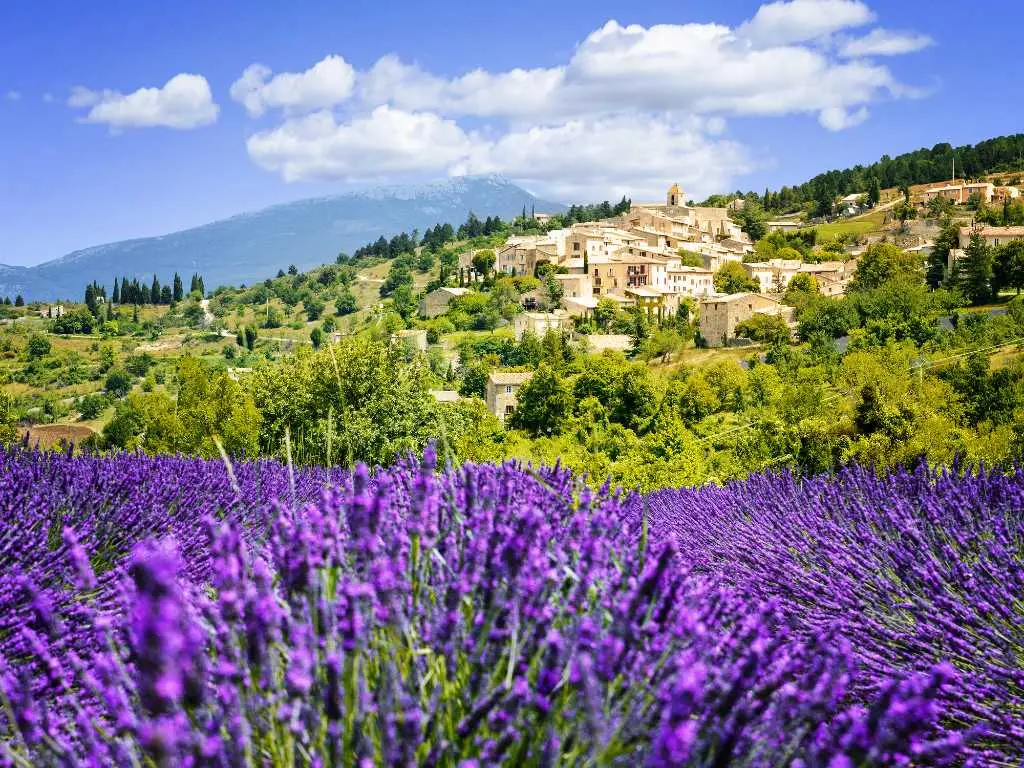
Provence: The Lavender-Scented French Region That Inspired Poets and Painters
Making fairy tales a little jealous

Nobel laureate and Provençal poet Frédéric Mistral once said, “When the Good Lord begins to doubt the world, he remembers that he created Provence.”
Religious or not, anyone who’s lingered amongst the sunflowers in this slowed-down region of southern France can hardly argue with his exaggeration. Even great artists found a muse in the landscapes that sprawl between the Rhône-Alpes and the Mediterranean Sea to the north and south, and the Rhône River and the Italian border/French Riviera to the west and east.
But sewn into an idyllic patchwork of mountains and valleys, glittering coastline and verdant grapevines, the real heart of Provence beats in the daily scents, sounds, savors, and joie de vivre that celebrate a land that could easily make a fairy tale feel a little jealous.
What’s that noise?
The unmistakable soundtrack of a Provençal summer comes not from an accordion rendition of La Vie En Rose, but rather from an insect—the cicada (la cigale in French)—and only when the temperature rises to above 77°F. Cigales are considered some of the loudest insects in the world and their distinctive chirping noise comes from the males who vibrate the membranes of their abdomens in order to attract a mate.
Cigales are easy to hear but difficult to spot as they camouflage against the bark and branches of trees. But this honorary symbol of the region is as ubiquitous as sunshine, and you’ll find their likeness in soaps, jewelry, keychains, and table linens at just about every market and tourist shop.
The cigale was the subject of a 1668 fable, and is believed to have become the “spokes insect” of Provence in 1854, when Frédéric Mistral created the Félibrige literary and cultural association and used the cigale to illustrate his bookplates.
Look closely at homes in the region. It’s common to see ceramic cigales hanging outside as a porte-bonheur—a good luck charm.
To market, to market…

Outdoor markets have been part of Provençal life since the Middle Ages. Just about every village holds one at least once a week, and they range in size from just a few stalls to legendary sprawlers such as the ones in Lourmarin, Saint-Rémy-de-Provence, and Vaison-la-Romaine.
Markets brim with fresh fruits and veggies, meat and cheeses, locally made olive oil, and regional musts like fougasse, a specialty bread usually baked in the shape of a leaf; socca, a savory chickpea crêpe found at Nice’s Cours Saleya market; petits farcis, stuffed vegetables; and pissaladière, a flaky pastry tart topped with onions, olives, and anchovies that is Provence’s version of pizza.
Eight regions in France—five of them in Provence—enjoy an AOP (appellation d'origine protégée) status for their olive oil, which you can stock up on at market stalls, too.
Try making socca at home with this easy-to-follow recipe, or dive into online cooking classes that bring Provence to your kitchen.
The nose knows
If ever there were a place to follow your nose, it’s to the scented countryside of Provence, and the medieval village of Grasse. Once a leather tanning center, Grasse is now known as the perfume capital of France and is surrounded by fields of fragrant lavender, myrtle, orange blossom, mimosa, May Rose, and jasmine, which are used by perfume creators. A few perfume makers in Grasse even invite visitors to create their own signature scent.
At the center of perfume creation is a nose, or a nez (pronounced nay) in French, a perfuming expert and scent creator. To become one takes up to seven years, and many a talented nose has made their way to Grasse to train and create for famous brands. For example, the iconic Chanel No. 5 was created by a Grasse-based perfumer, Ernest Beaux, in 1921.
Chanel, along with other brands, even has dedicated flower fields in Grasse. Check out this video of Chanel’s May Rose fields. We’re only sorry it’s not a scratch-and-sniff.
Purple power

If cigales are the soundtrack of Provence, then lavender is its signature scent. The perfumed purple bloom was brought to France around 600 BC by traders from the Îles d'Hyères, an island just off the coast of Toulon. From June to August, sun-drenched rows of lavender dazzle, especially around the Luberon Valley and the Verdon Plateau, near the village of Valensole.
Lavender products abound, from sachets for your sock drawers to essential oils for your bath. It colors sweet and savory dishes and adds local punch to cocktails. Lavender is also used in the renowned French herb blend, herbes de Provence.
Speak like wandering poets
Learning slang words in different languages is always a fun bar trick, but in Provence, an entirely different language lingers on certain tongues and street signs. Provençal, or Provençau, is one of several dialects of Occitan, an ancient Romance language that was the pervasive patois of the region from the 12th to 14th century. It was also the primary language of the troubadours, the traveling poets and musicians of the Middle Ages.
In 1854, Frédéric Mistral helped found the Félibrige, a literary and cultural association, to conserve and promote the Occitan traditions and language and its assembly of dialects, including Provençal.
Start practicing with these helpful Provençal words that are slightly different from their French cousins.
Hello = bonjorn
Please = se vos plai
Thank you very much = grandmercé
Excuse me, there are bubbles in my glass
Set between populous Nice and blingy Cannes, Biot (pronounced bee–ott) is the home of a particular style of thick and heavy bubble glass.
The glass tradition in Provence dates back thousands of years, but in Biot everything began to bubble up (pun intended) in 1956 when ceramic engineer Éloi Monod came up with a technique of sprinkling bicarbonate of soda between two layers of molten glass that left tiny bubbles of carbon dioxide when vaporized.
Bubbles, once considered a flaw and a sign of poor workmanship, suddenly became the signature mark of products made in this hilltop village. Monod’s original glass studio, La Verriere de Biot, is open to the public, as are many other studios and shops around the village, where glass artists still train.
A muse for the masters
Provence lured myriad famous artists who found their muse in the region’s colors, landscapes, people, and light—among them Paul Cézanne, Pablo Picasso, Henri Mattise, and Vincent van Gogh.
The city of Aix-en-Provence is practically an ode to Cézanne, from a statue of him at La Rotonde to his studio to Les Deux Garçons, the brasserie where Cézanne and his childhood friend Emile Zola often met. A mountain just outside town, known as Sainte-Victoire, featured in many of Cézanne’s paintings.
Picasso used part of the seaside Grimaldi Castle in Antibes for his studio, and in 1966, it officially became the Picasso Museum. The early 20th-century French artist Henri Matisse first arrived in Nice in 1917 and stayed until his death in 1954. The city’s Musée Matisse holds one of the world's largest collections of his works.
Vincent van Gogh was so inspired by Provence, he created some of his most recognizable works during his brief time in Arles and St.-Rémy-de-Provence, including The Starry Night, Sunflowers, and Café Terrace at Night. It’s also in the ancient Roman city of Arles that van Gogh famously cut off his ear.
Wanderlusty words
Like painters and sculptors, writers also found inspiration from the landscape and life in Provence. Alphonse Daudet’s Letters From My Windmill, F. Scott Fitzgerald’s Tender Is the Night, Peter Mayle’s A Year in Provence, Carol Drinkwater’s The Olive Farm: A Memoir of Life, Love and Olive Oil in the South of France, and the recently released Chanel's Riviera by Anne de Courcy are all set in Provence.
Rosé all day

In Provence, the pale pink wine fuels a carefree lifestyle, whether sipping it in a small village, tasting at a winery, partying on a yacht at a glitzy Riviera beach club, or dining at a Michelin-starred restaurant.
Winemaking in Provence dates back more than 2,500 years, when the Phocaeans founded Marseille and brought the grapevine to France. These wine makers had not yet perfected the maceration process and created a pink juice—the harbinger of the pink drink we know and love today.
Provence is now the top region in France for the production of rosé. Pour a taste with a splash of Brad Pitt and Angelina Jolie’s rosé, Miraval, Château d'Esclans' popular Whispering Angel, or Minuty from the Saint-Tropez peninsula. All can be found in the US.
Let’s play boules!

Nary a Provençal village exists where locals don’t gather on a patch of packed dirt to play pétanque (pay-tonk). And, since the game is about skill and tactics, and not about physical strength, young and old can—and do—play with gusto.
Pétanque comes from the word petanca in Provençal dialect, or “feet fixed,” a nod to one of the rules of the game—that feet must be planted on the ground while playing.
This social game involves a small ball (un cochonnet), which is tossed as a target. Two teams of two or three players then take turns launching heavy iron balls (boules), attempting to land them as close as possible to the target, or knock an opponent’s ball away, which earns them points. The first team to 13 wins. Games can get heated, and it’s not uncommon to see players whip out small tape measures to determine winners.
Hold onto your hat
You won’t get far in Provence without hearing about the Mistral (le Mistral) and the love-hate relationship locals have with this cold northwesterly wind, which can whip through at speeds of 55 mph.
Typical houses are built facing south with their backs against the aggressive wind. The Mistral is so much a part of life in Provence that even traditional nativity scenes include hand-painted clay figurines (santons), a Provençal tradition, including one depicting a shepherd holding his hat, with his cloak blowing behind him.
While cool blasts of air can be menacing and chill bones, the Mistral also clears out pollution, dries up mildew and moisture (good for vineyards), and is the reason Provence is kissed by more than 300 days of sunshine each year.
Rome, if you want to

Provence was the first province to be set up under the Roman Empire, and the handiwork of its former conquerors is scattered all over the region. Some of the best-preserved remains are found in the towns of Arles, Aix-en-Provence, Orange, and Vaison-la-Romaine.
The oft-photographed Pont du Gard is a UNESCO World Heritage Site built as part of a 30-mile-long aqueduct to carry fresh water to Nîmes, which itself is often called the most Roman city outside Italy.
A whole ancient Roman town is visible at Glanum, an archeological site less than a mile outside Saint-Rémy-de-Provence. Named for the Gallic god Glanis, Glanum was settled long before the Romans arrived, but it was they who erected the temples, forums, theaters, and baths. Two well-preserved structures—the mausoleum and the oldest triumphal arch in France—were classified as national monuments in 1840.
The art of apéro
The French know how to eat and drink well, and l’heure d’apéro (the French equivalent of happy hour) doesn’t get better than in Provence.
Apéro can be anything from a simple glass of rosé or pastis (an anise-flavored spirit) with some local olives at a neighbor’s home to a glass of bubbly and fancy canapés on the terrace of a swanky hotel. The only rule for apéro is enjoyment.
Host your own with a chilled bottle of Côte de Provence rosé and some tapenade, a savory Provençal spread made from black or green olives, capers, and anchovies, eaten on small crackers or toasts.
Combining your trip with Paris? Read our layover guide to Paris and join Going to find cheap flights to France and around the world.
Read about more destinations in France:
Last updated December 19, 2023
Articles you might like
View All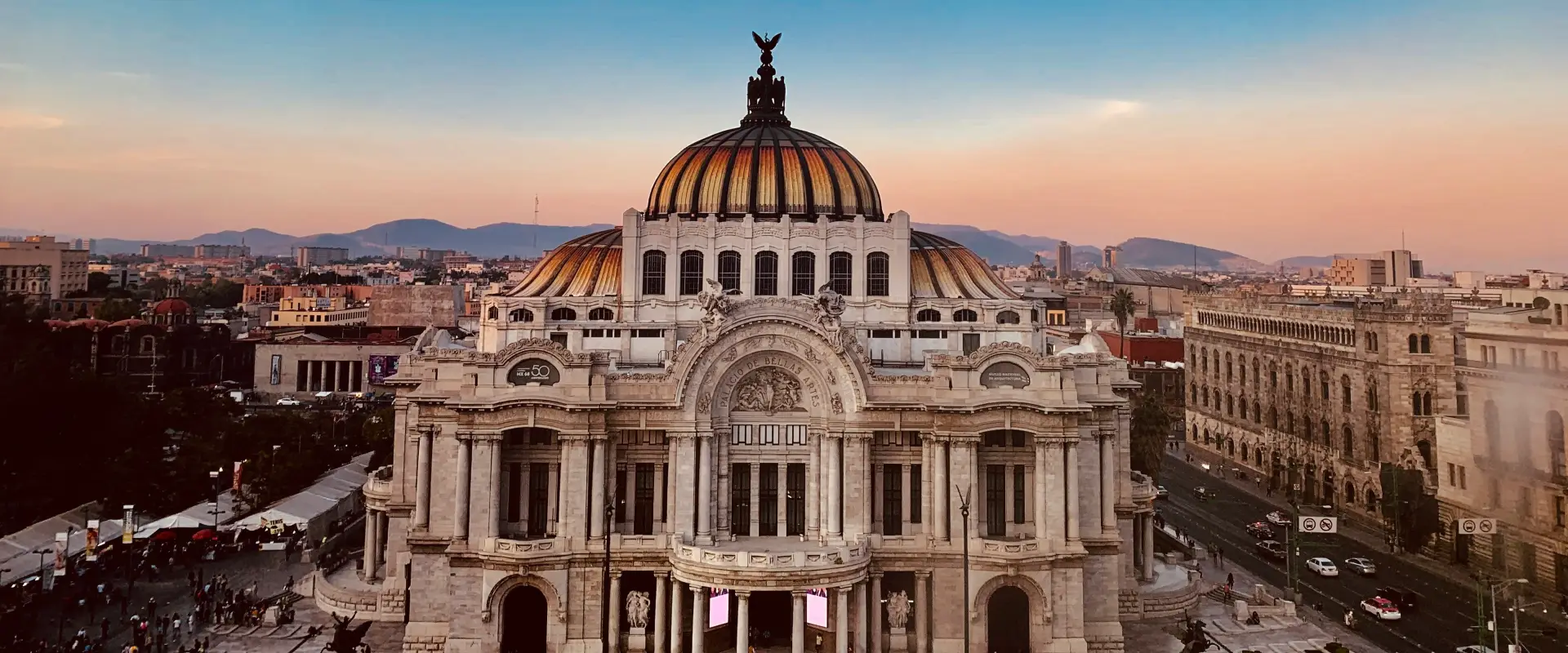
Our Favorite Things to Do in Mexico City: Hidden Gems and Must-See Spots in the Heart of the Capital
Dec 17, 2025
9 min read
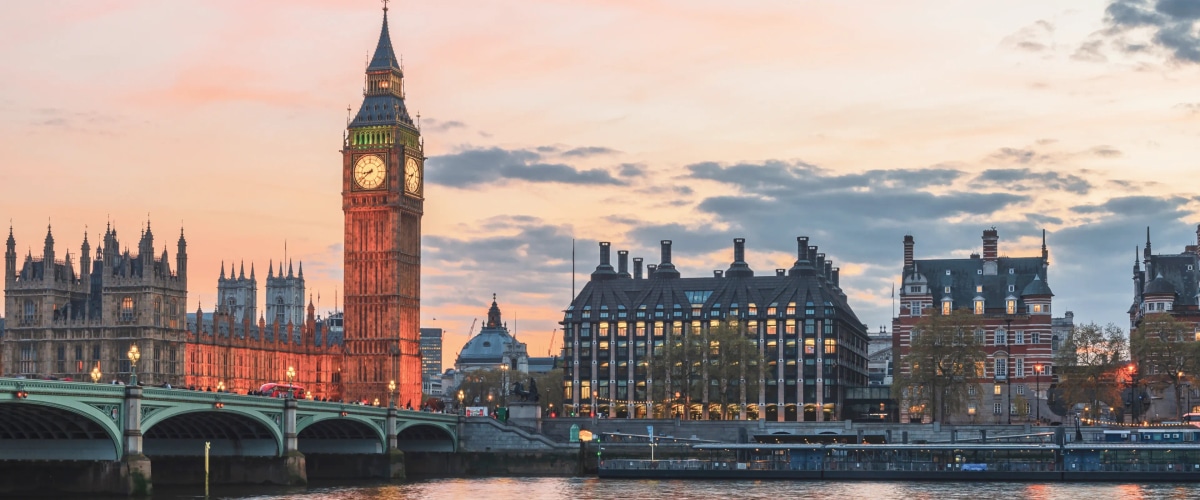
Things To Do In London: Classic & Hidden Spots For a Complete Trip
Dec 16, 2025
13 min read

Things To Do in Orlando: The Ultimate Guide
Dec 9, 2025
10 min read

